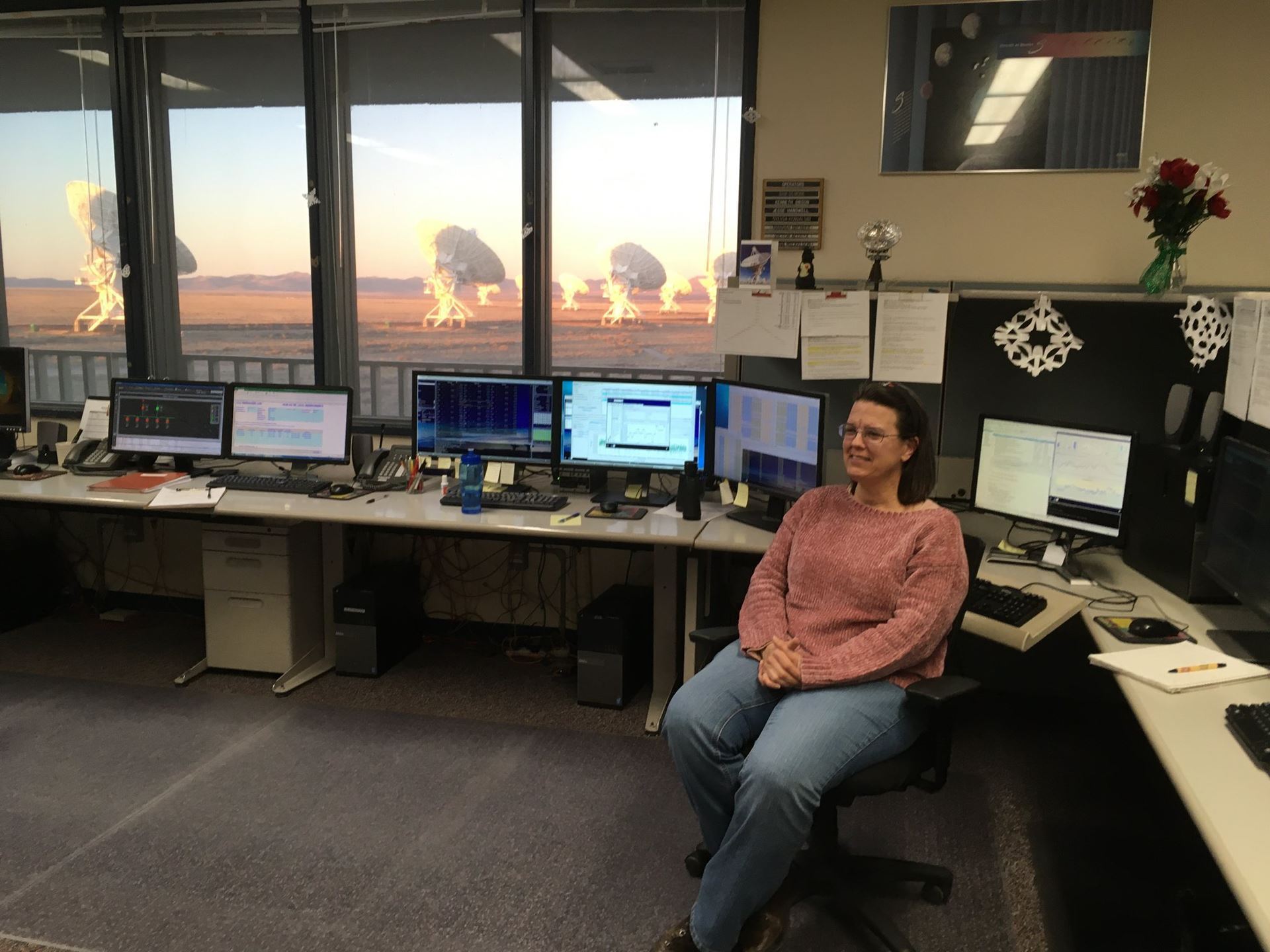Meeting by Zoom
Agenda:
7:00 - 7:30 General Meeting & Announcements
7:30 - 7:45 Refreshments
7:45 - Public Presentation
Speaker: Deena Mickelson
NRAO VLA Operator

Topic: NRAO Tour and a Day in the Life of a VLA Operator
About the Speaker
I am a retired Navy Chief Petty Officer and Aircrewman who used her GI Bill to study astronomy at the University of Florida. After graduating I landed a job at the Very Large Array in Socorro, New Mexico where I have the fortune of being one of only seven “VLA Operations Specialists” – more commonly known as VLA Operators.
Abstract:
The Very Large Array is part of the National Radio Astronomy Observatory (NRAO). It was built in the 1970s and went operational in 1980. Between 2001 - 2012 it underwent a major upgrade into what is referred to as the Extended VLA (EVLA), and now there are plans for yet another upgrade to the Next Generation VLA (ngVLA).
The NRAO is run by Associated Universities, Inc. (AUI) - a non-profit corporation, headquartered in Washington, DC. There are two other telescopes that fall under NRAO; ALMA and the VLBA. The Green Bank Telescope was designed and built by NRAO but is now operated by the independent Green Bank Observatory.
The VLA itself has 27 antennas in an array consisting of railroad tracks along three arms, each about 13 miles long. While one antenna weighs about 230 tons, we have two specially built vehicles called “Transporters” that can move the antennas along those railroad tracks. Usually we change antenna configurations every 4 months to optimize observing needs, but since 2017 one of those configurations is extended a while and the other three shortened to allow for a hybrid configuration used for VLASS (The Very Large Array Sky Survey) observations. There are actually 28 antennas on site, but one is kept in rotation so we can perform routine maintenance and/or upgrades while simultaneously observing. That said, we can have up to 3 additional antennas offline and still collect good data. This means we can even observe while moving antennas into new configurations.
The brain behind all those telescopes is called the Correlator, which is located in a chamber right next to the Control Room where I work. This supercomputer crunches all the numbers; the signals received by the antennas, the exact locations of those antennas, the distances and directions between them, and a multitude of other information. Without the Correlator, we would be dead in the water. Researchers from around the world use the VLA.
To apply for telescope time, all they do is submit a proposal - it does not cost them any money. Based on the scientific merit of the proposals, they are either granted time or not. Once a proposal is accepted, they write their script – a computer program that tells the antennas what to observe. They use NRAO software and we have Astronomers on hand to help. These scripts are reviewed and once they are deemed good, loaded into a queue, waiting for the time they will be run. The VLA Operator pulls a schedule from a database called the Operations Scheduling Tool (OST) which sorts these scripts by their priorities, telescope configuration and weather requirements, and – of course – by what time the targets they want to look at are in the sky.
If there is no reason to reject it, the Operator accepts and runs the script. Once the observation has been completed, we email the researchers our log for their observation along with where they can access their data. For one year it is theirs to do what they want with, but after that, the data is released into a public database.



